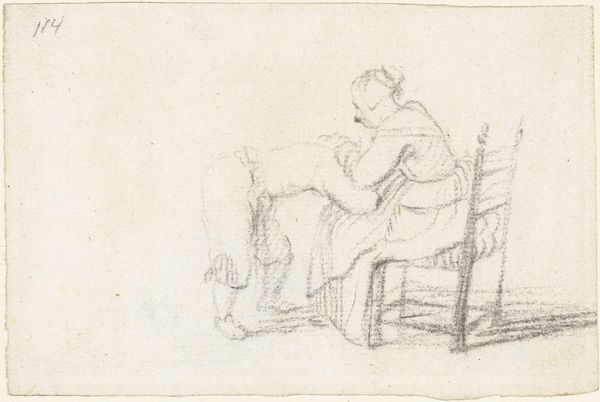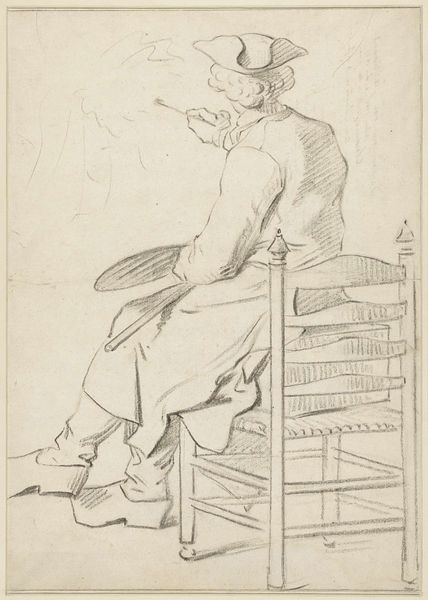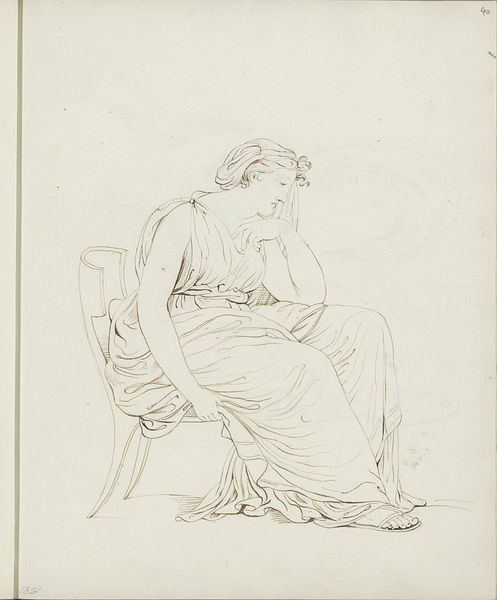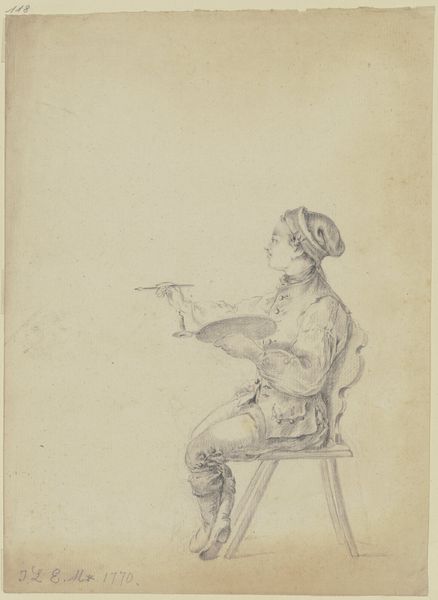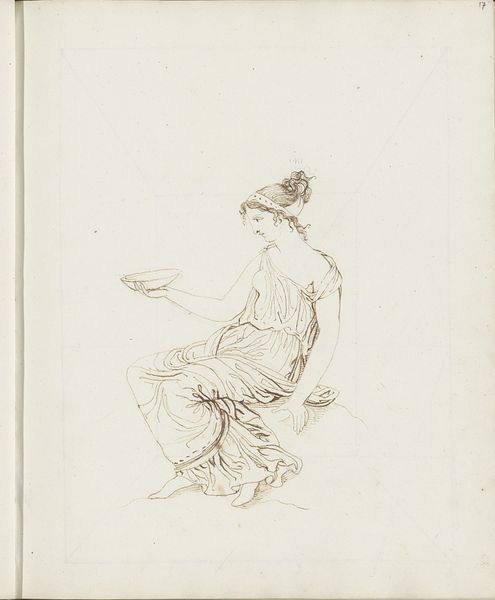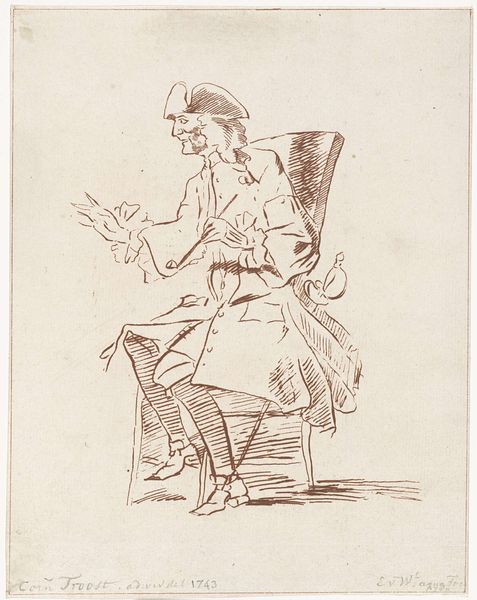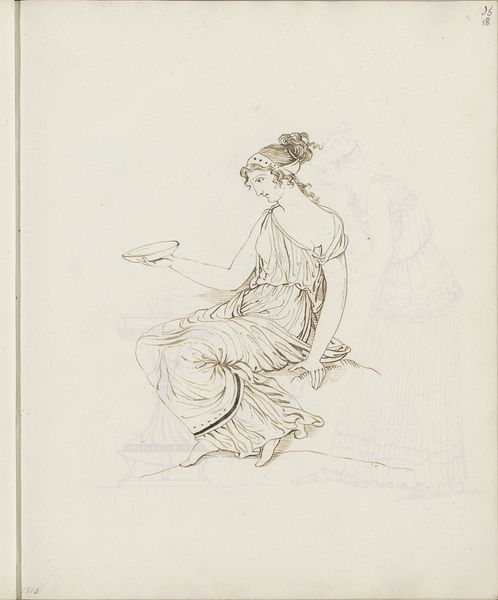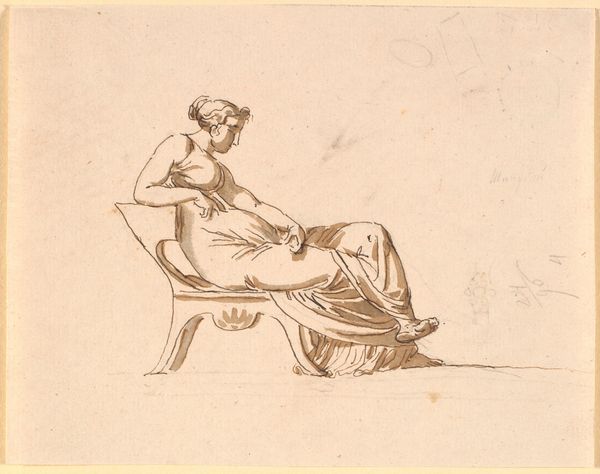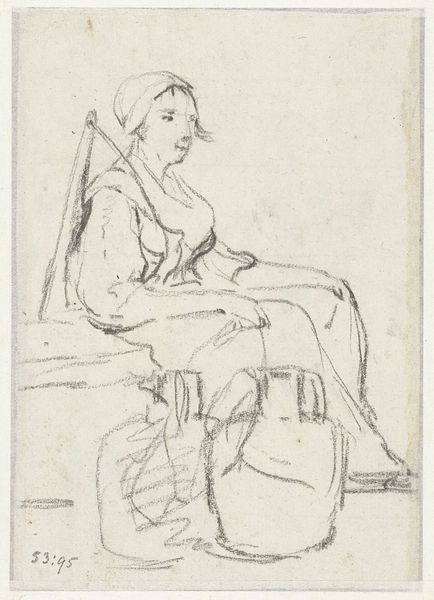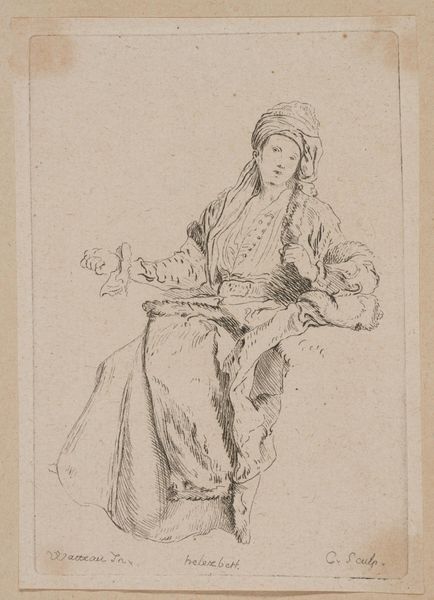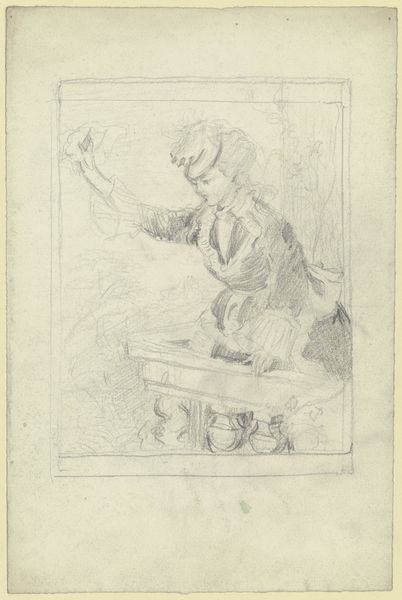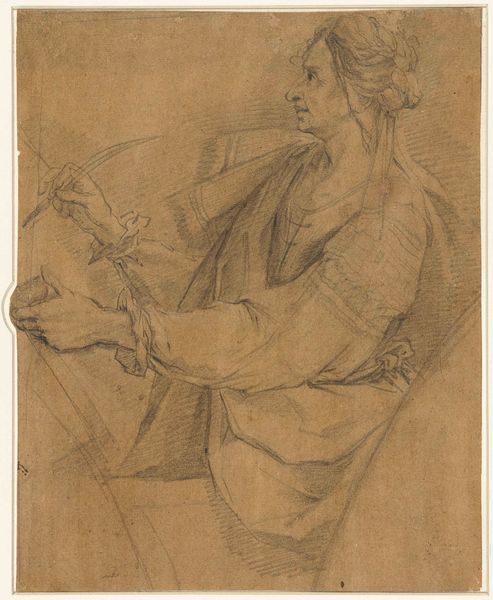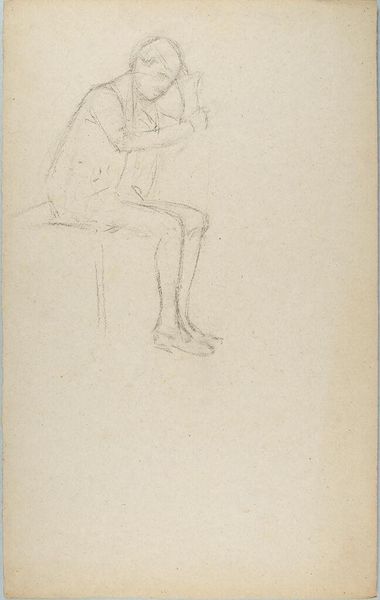
drawing, pencil
#
portrait
#
drawing
#
neoclacissism
#
pencil sketch
#
pencil
#
academic-art
Copyright: Rijks Museum: Open Domain
Curator: A pencil drawing from 1816 entitled "Zanggodin die de lier speelt, naar klassiek voorbeeld" or "Singing Goddess playing the lyre, after a classical example". It's quite delicate, a portrait in the Neoclassical style, presumably depicting a muse. What strikes you most about it? Editor: It feels like a study, perhaps preparatory. I am curious about the relationship between the artist, Elisabeth Kemper, and her subject. The lyre seems more of a prop than a fully integrated element. Is this more about the social function of portraiture or a deep exploration of classical mythology? Curator: An interesting point. Let's think about the production of this drawing. The labor involved in creating such a refined pencil sketch, and the materials themselves - pencil, paper, access to classical models – those point to a specific social class and artistic training, wouldn't you say? How does this context shape our understanding of the "divine"? Editor: So you're saying that the drawing's materiality and production reflect the societal structures in which Kemper operated, shaping how she could represent even a goddess? Was this a typical subject matter for female artists at the time, and what materials would they typically use? Curator: Exactly. A female artist engaging with classical themes can also be seen as an act of claiming cultural capital, entering a traditionally male domain. The use of readily available and relatively inexpensive pencil might also indicate a degree of modesty or perhaps accessibility – this could have been meant for a wider audience, maybe even for teaching purposes within her social circle. What do you think? Editor: I never thought about it that way. It makes the drawing much more complex – it is not just about art but speaks to the means of production, consumption, and social standing in the Netherlands in the early 19th Century. I now see the "prop" not as a simple representation but an important symbol of class, privilege, and artistic access! Curator: Yes, thinking through materials helps to bring attention to how society and culture influence even ethereal-seeming subject matter. It opens so much more beyond aesthetic taste, right? Editor: I agree completely. Thanks, I learned a lot!
Comments
No comments
Be the first to comment and join the conversation on the ultimate creative platform.
